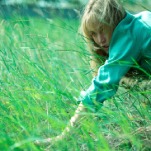The Borrowers and The Secret World Of Arrietty offer radically different takes on a kid-lit classic

Every day, Watch This offers staff recommendations inspired by a new movie coming out that week. This week: The sequel Percy Jackson: Sea Of Monsters has us reflecting on stellar kid-lit adaptations.
The Borrowers (1997) / The Secret World Of Arrietty (2012)
Mary Norton’s The Borrowers, published in 1952, won the U.K.’s Carnegie Medal and eventually spawned four sequels about the Clock family, specifically teenage daughter Arrietty Clock. The Clocks are “borrowers,” tiny people who live among humans (or “beans”)—usually in the walls and floors of their homes—and survive by borrowing (not stealing) items from their larger counterparts. Two feature films have attempted to capture the charm of the beloved modern classic, and they both spin interesting tales by taking the bare bones of the story and adding elements to suit their purposes.
The Borrowers, a 1997 live-action film, opens by tracking a Rube Goldberg machine built by the industrious human boy who suspects something’s amiss when items keep disappearing from his house. This extended shot pretty much sets the tone for the rest of the movie—a collection of whimsy and plot mechanics that seems on the brink of going off the rails, but is so charming and silly, it begs for forgiveness. This film reduces Arrietty’s role as the protagonist and piles on colorful secondary characters for flavor. An inheritance/nefarious-lawyer plot is introduced seemingly for the purpose of incorporating John Goodman as a villain. Jim Broadbent plays the borrower patriarch, Pod; Hugh Laurie appears as Officer Steady; and Mark Williams (Mr. Weasley in the Harry Potter films) is a borrower-friendly exterminator Goodman hires to kill the Clocks. Another plot point created just for the movie was the introduction of Peagreen (played by a very young Tom Felton, Draco Malfoy in the Potter films) as the Clocks’ second child, whose purpose in the story is to require rescuing from a milk-bottling plant.






































